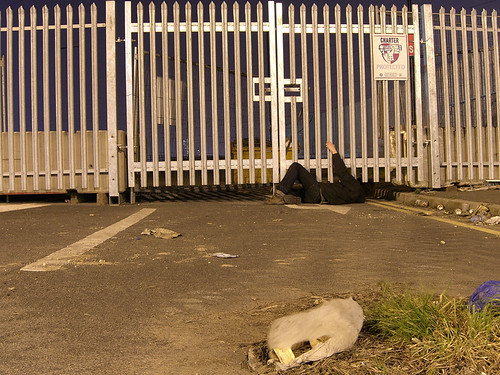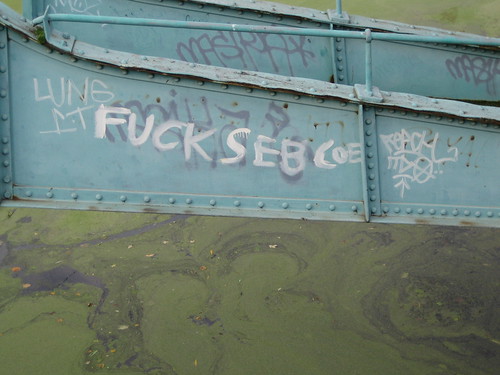"What!?" I often forget about the capital, my hometown, while living in the countryside. It seems so much further than the three hour train ride, a different type of distance.
"Yeah, the Olympic site is burning down".
"Where exactly?" I said leaning across the counter excitedly, suddenly I felt out of it, away from the action. Tom peered deep into his screen scanning the text for the information,
"Waterden Road". I spent the afternoon plodding between news sites, searching for the exact location of the fire, which did not take long. Two days later the whole internet was awash with photos, and my mind was made up. I had to go, and soon.

The building in question was less than one hundred metres from my first and favourite entry point, next to the bus garage which was, I believe, the last non-olympic operation to leave the site and was still functioning on this cold november night (a year ago). Perched atop the fence I was struck by the most impressive of all the panoramas I had yet witnessed here. On the left the mangled silhouettes of corrugated sheeting buckled under the intense heat of the flames, all backlit by the disturbing orange/purple glow of the city at night. On the right probably the most cliched image of demolitio-philia: a towerblock in mid-teardown, its framework fraying at the edges to strands of steel knotted with clumps of concrete.
Once again there was no sign of any life, or even security, just some distant lights, which by now I had learned to ignore - they were as likely to have been left on or have a sleeping guard beneath them as they were to indicate any danger. I approached the building, really at a loss to know how to deal with such a subject. I could still feel smouldering warmth and a smell that took me back to childhood tube journeys: melting brakes wafting up the tunnels. That evening produced my most straightforwardly sympathetic reactions to these places. Although I have often engaged in emotive postures, only this building has provoked genuine sadness. I slumped in forlorn imitation of its sagging structure, tried to haul it upright and bodged mending one of its gaping holes with my body.

On its other side was emblazoned the clue as to the reason for the fire. I think the official version still reads that a welder's torch was left burning while the workers ate their sandwiches. The sign read something along the lines of ASBESTOS NO ENTRY. A few days later the front of the Hackney Gazette read ARSON. I am not in the business of investigative journalism and have no wish to be, so all that follows is strictly speculation. There is no reason to weld inside a condemned building, I guess one might want to use an oxyacetylene cutter, but judging by the demolition strategies in evidence elsewhere in the area, this would be anomalous in the extreme, buildings were not being dissected. This building it seems was cremated. One can only assume that the health and safety procedures governing the safe removal of asbestos proved impracticable to a high profile project with a deadline considerably more strict than that of the Scottish Parliament. Hackney Council now seem to have adopted this as a favourite tactic (there have been nine fires in five years in derelict buildings occupying Dalston's development area): the slash and burn mentality of siege warfare prevailing to this day in local development disputes.
I heard distant footsteps, over my shoulder, and froze. I am told it would take 120,000 individual speakers arranged in a sphere to test the spatial awareness of two human ears. On this night mine served me well, I turned around and spied a fox making it's way along the mud embankment beneath the proposed undulating roof of the Olympic Pool.






































